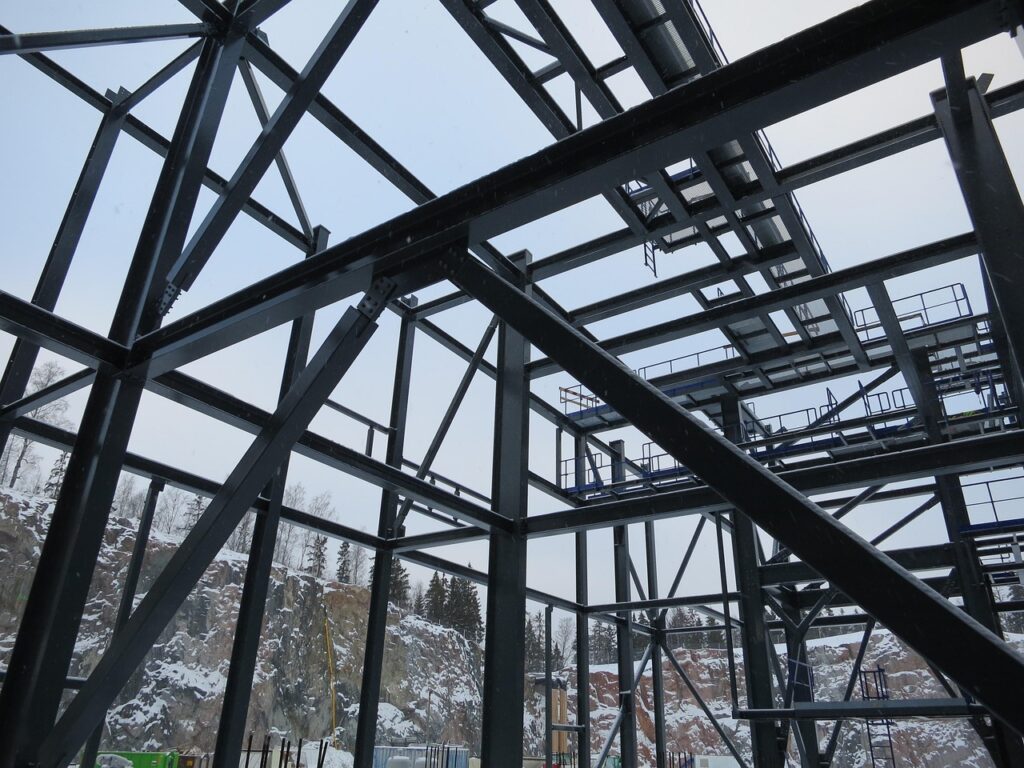Greensborough residents are always on the lookout for affordable, durable, and versatile structures. Because of this, metal buildings have become a popular option.
Among the most efficient methods of constructing metal buildings is post frame construction. This method offers flexibility in design, speed in completion, and strength in structure.
Post frame buildings are used for barns, workshops, garages, commercial spaces, and even homes. Understanding the steps involved in building a post frame metal building is essential for anyone considering this investment.
About Post Frame Construction
Post frame construction uses large posts embedded in the ground or mounted on concrete piers to form the structure’s skeleton. These vertical posts serve as the main support system, allowing for wide-open interior spaces with fewer load-bearing walls. Roof trusses and girts are attached to the posts, creating the framework for siding and roofing. This method stands out due to its cost effectiveness, reduced labor time, and adaptability to various uses.
Assessing Your Needs and Goals
Every building project begins with a clear purpose. You need to identify what the structure will be used for. You may require storage for agricultural equipment or a multi-use garage and workshop. The size, layout, and features of the building must align with your specific objectives. It helps to make a list of current and future needs to avoid unnecessary changes later in the project.
Choosing the Right Location
The land you build on plays a vital role in the success of your project. You must evaluate the topography, drainage, soil condition, and accessibility of the site. Avoid areas prone to flooding or those with unstable soil. A well-drained and level site reduces construction challenges and future maintenance issues. You should also consider the orientation of the building to take advantage of sunlight and wind patterns, especially if energy efficiency is a goal.
Obtaining Permits and Local Approvals
Before breaking ground, you must secure all required permits and approvals from the local authorities in Greensborough. Building codes and zoning laws vary, so it is important to understand the regulations that apply to your property. Applications may include detailed building plans, site surveys, and environmental assessments. Delays in permit processing can stall your project, so early application is highly recommended.
Designing Your Metal Building
Once permits are in place, the next step is the design phase. This includes choosing the building dimensions, roof style, door and window placement, and insulation requirements. You should work with an experienced designer or engineer who understands the structural demands of post frame buildings. Make sure the design supports the intended use of the building while staying within your budget. Custom features such as lofts, lean-tos, or attached offices can be incorporated at this stage.
Selecting the Right Materials
High quality materials determine the longevity and performance of your building. Choose treated wood for posts that will be in contact with the ground to prevent rot and pest damage. Galvanized steel panels are a common choice for roofing and siding due to their durability and low maintenance requirements. You should also consider insulation, vapor barriers, and ventilation systems for energy efficiency and comfort. Reliable suppliers in Greensborough can help you find the best materials that suit your budget and needs.
Preparing the Construction Site
Once the design and materials are finalized, the construction site must be prepared. This involves clearing vegetation, leveling the ground, and laying out the building footprint. If the soil is soft or unstable, additional foundation work may be needed. Drainage systems and gravel bases are installed to keep water away from the building foundation. A well-prepared site ensures a smooth building process and contributes to the longevity of the structure.
Installing the Foundation or Footings
Post frame buildings either use embedded posts or mounted posts on concrete piers. Each method has its advantages. Direct burial of posts is faster and more economical, while concrete footings offer added stability and protection from moisture. The post holes are dug to the required depth and filled with concrete to secure the posts. Proper alignment and spacing of posts are essential to ensure structural integrity. A level foundation reduces stress on the entire frame.
Framing the Structure
Framing is the backbone of your metal building. It involves installing the vertical posts, attaching horizontal girts, and setting the roof trusses. This creates the structural skeleton that supports the roofing and siding. Care must be taken during this phase to maintain square and plumb measurements. Bracing is often used to hold the frame in place until all connections are secured. This step requires skilled labor to ensure that the load is distributed evenly and that the frame can withstand external forces such as wind and snow.
Adding Roofing and Siding Panels
Once the frame is up, roofing and siding panels are installed. Metal panels are secured to the frame using screws with rubber washers to prevent leaks. The panels are overlapped in a pattern that directs water away from the interior. Roofing typically goes on before the siding to provide cover during inclement weather. Trim pieces, ridge caps, and closures are added to seal joints and improve aesthetics. High quality panels not only enhance the appearance but also protect the building from the elements.
Installing Doors and Windows
After the panels are in place, it is time to install doors and windows. The size and type of access points depend on how the building will be used. Overhead garage doors, walk-in doors, and sliding barn doors are common options. Windows can bring in natural light and ventilation. Placement should allow for easy access and maximum utility. Proper sealing around openings prevents air leaks and moisture intrusion, which helps maintain the building’s interior environment.
Electrical and Plumbing Work
If your post frame building requires electricity or running water, now is the time to install these systems. Licensed electricians and plumbers should handle this part of the project to ensure compliance with local codes. Wiring for outlets, lighting, and machinery must be integrated into the frame. Plumbing for sinks, restrooms, or irrigation should be connected before insulation and interior walls are added. Proper installation now will avoid expensive repairs later.
Adding Insulation and Interior Finishing
Insulation helps maintain comfortable temperatures and reduces energy costs. Choices include batt insulation, spray foam, and rigid board. Vapor barriers may also be needed to prevent condensation. Once insulation is installed, interior walls such as plywood, drywall, or metal liner panels can be added. Interior finishes depend on the intended use. A garage may only require basic finishes, while a workshop or office space may need a more polished look.
Site Cleanup and Final Inspection
With construction nearly complete, the site must be cleaned of debris, excess materials, and equipment. A final inspection is typically required to ensure compliance with building codes and safety standards. Inspectors will verify structural integrity, electrical and plumbing systems, and overall quality. Once approved, you can begin using your new post frame metal building.
Common Challenges and How to Address Them
During any construction project, unexpected issues can arise. These may include delays in material delivery, poor weather conditions, or labor shortages. You should maintain open communication with your contractor and suppliers to address these problems quickly. Planning ahead and working with experienced professionals reduces the likelihood of major setbacks. A contingency fund in your budget can also help you manage unforeseen costs.
Choosing the Right Contractor
Your choice of contractor can make or break the project. Look for a contractor with experience in post frame metal buildings and a strong reputation in Greensborough. Ask for references, review past projects, and verify licensing and insurance. A good contractor will guide you through the entire process and keep the project on schedule and within budget. Communication and trust are essential to a successful working relationship.
Cost Considerations and Budget Planning
Cost is always a factor in building decisions. You should create a detailed budget that includes materials, labor, permits, and contingency funds. Get multiple quotes to compare pricing, but avoid choosing a contractor based solely on the lowest bid. Cheaper materials or rushed construction can lead to costly repairs later. Plan your financing ahead of time and track expenses throughout the project to stay within budget.
Long Term Maintenance and Upkeep
Once your building is complete, regular maintenance will keep it in good condition. Inspect the roof, siding, and foundation periodically for signs of damage or wear. Clean gutters, remove debris, and touch up paint or coatings as needed. Prompt repairs prevent small problems from becoming major issues. A well maintained post frame metal building can serve you for decades with minimal issues.
Future Expansion Possibilities
Post frame buildings are highly adaptable. If your needs grow, you can add lean-tos, extend the length of the structure, or include additional interior features. The open floor design makes it easier to change the interior layout without major structural changes. Plan for future expansion during the initial design phase to make future additions more seamless.
Conclusion
Building a post frame metal structure in Greensborough involves a series of carefully planned steps, from assessing your needs and securing permits to choosing materials and completing construction. Each stage requires attention to detail and professional guidance. This type of building offers long term value, flexibility, and resilience. When done correctly, your investment will serve you well for years to come. Understanding the process helps you make informed decisions and ensures that the final structure meets your expectations in both form and function.

